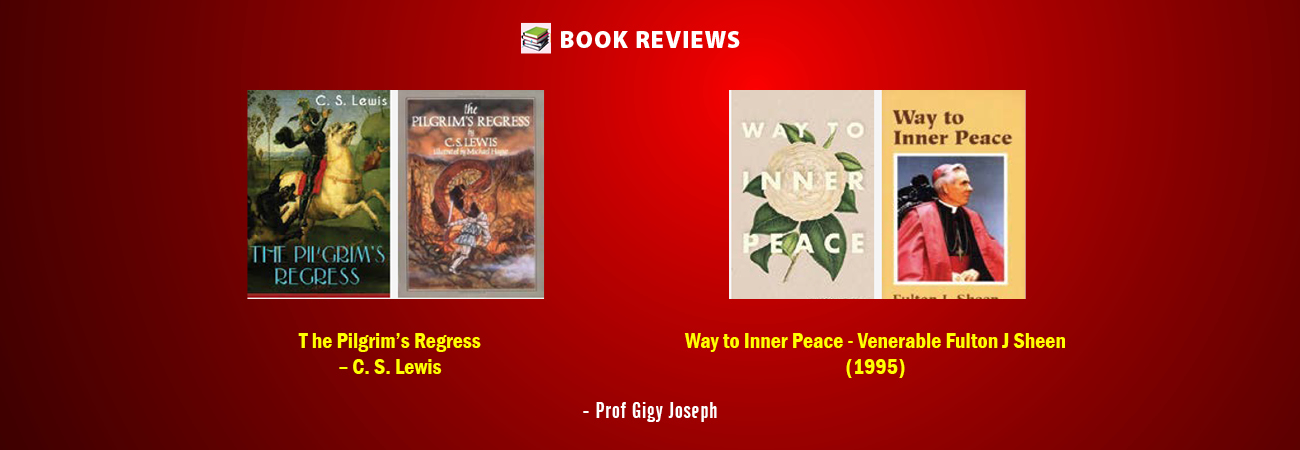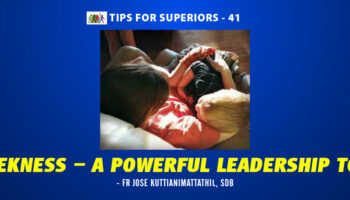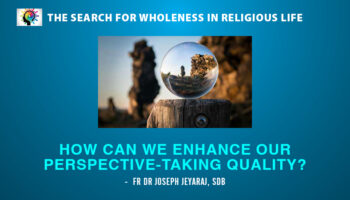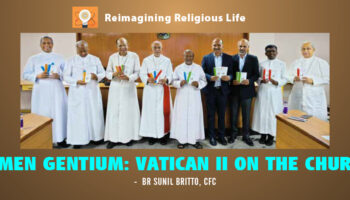The Pilgrim’s Regress – C. S. Lewis
The Pilgrim’s Regress is an adventure story set in the world of ideas and invites comparison with John Bunyan’s The Pilgrim’s Progress. It is written in the form of a dream allegory with a modern twist, and is a veiled spiritual autobiography. The story takes us through the life of John, the author’s fictional counterpart who journeys through the world of modern philosophical and political ideologies, leaving them all behind as inadequate or unsatisfactory. John finally returns to the ancestral ruined cottage in “Puritania” where he once lived with his parents. John is the type of modern intellectual and earnest seeker. Like Bunyan’s The Pilgrim’s Progress, in Lewis’s The Pilgrim’s Regress, John’s journey takes us through different lands. John starts from Puritania under a tyrannical yet distant Landlord (God) bound by its “rules”. He has dreams of an island for which he has a strange longing, inspired by his sense of beauty. Initially he suspects this yearning as sexuality personified as “brown girls”. Realizing the mistake, he escapes from Puritania first accompanied by Mr. Enlightenment (19th century philosophy), a worshipper of science and technology – who effectively chokes out John’s remnant faith in the Landlord. In the cities of Thrill and Eschropolis (city of ugliness), John sees personifications of romantic love, modernism and Freudianism. He also encounters a group of artists of the bohemian type in the town called Claptrap and is imprisoned by the ‘Zeitgeist’ (spirit of the Age). His dream island is not realized through aesthetic experience, only damaged by these characters. Realizing the error, he abandons the cities where his pursuit of truth was hindered. He resides in the house of Mr. Sensible a champion of “the simple life”. Sensible’s house without foundations is perched on the edge of a canyon into which it falls, but the two travelers escape in the nick of time. At one point, John realizes “the real shape of the world we live in-how we walk on a knife-edge between Heaven and Hell”. The book engages the reader, with its lucid style, wit and humor in places, while commenting on the cultural conditions of our time and how faith is challenged.
Way to Inner Peace – Venerable Fulton J Sheen (1995)
This book directly addresses the issues and illnesses of modern humans, from the point of view of modern psychology and New Testament spirituality. With characteristic wit, wisdom and humour, Sheen observes how humility, love, repentance, patience, charity and a healthy sense of humour could provide us with what all humans really seek- peace and joy here on earth. It contains 59 short chapters under nine separate themes like Inner Peace, Goodness, Happiness, External Influences, Virtue, Learning, Wisdom, You and Faith. The very first chapter is about the deepest sickness of the human soul – Egotism – which Sheen describes as the “enemy of inner peace.” He points out how the popular ways of expressing the virtue of humility such as “never brag, never talk about yourself… never use people to your own advantage” are not enough. We should be able to go beyond such gestures, “humbling ourselves before others to recognizing our own littleness in comparison to what we ought to be.” Humility which gives preference to others is not very popular today, principally because people have forgotten the Greatness of God. Our refusal to pray or contemplate God or love Him, makes us proud. Egotism is expressed in the training of children by parents who make them believe that they are smarter than everyone else. He stresses how important it is to educate the child from early on. Two ages which are most important in education – the ages between three and four for psychological development, and the beginning of the teens for ethical development. Faithfulness in great things is not uncommon, but faithfulness in little things such as a husband’s attention to the convenience or happiness of his wife is “a more eloquent proof of tenderness.” Our age is the age of immense wealth and power, but so little peace, so much education but “so little coming to the knowledge of the truth”. Since its original publication in 1949, this book has run into several international editions.
To subscribe to the magazine, click Subscribe





